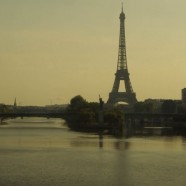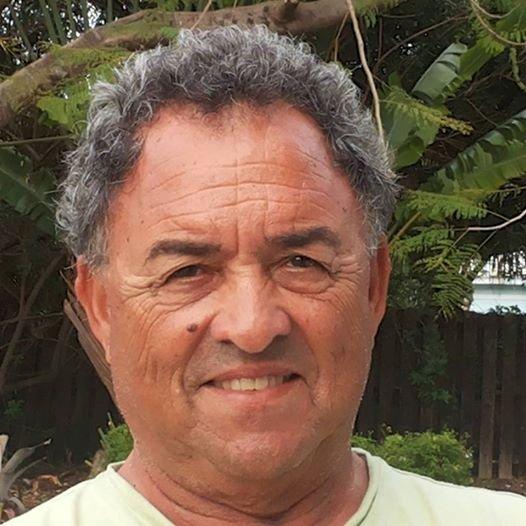
The Tiger Rose Part 1
 In September I was asked to consult on, and skipper, the TIGRE ROSE, a 30 meter barge yacht. My client, from St. Petersburg, Russia, is new to European – or any other – canals. In addition to learning more about what canal cruising can offer, he is interested in carrying out a improvements to the vessel to make it more comfortable to live aboard. There was also the need for him to learn more about the ins and outs of hiring professional crew, and the attraction of a relationship with a Yacht Management company. When home is Russia, one suspects that a good reputation does matter more than where the management company works out of.
In September I was asked to consult on, and skipper, the TIGRE ROSE, a 30 meter barge yacht. My client, from St. Petersburg, Russia, is new to European – or any other – canals. In addition to learning more about what canal cruising can offer, he is interested in carrying out a improvements to the vessel to make it more comfortable to live aboard. There was also the need for him to learn more about the ins and outs of hiring professional crew, and the attraction of a relationship with a Yacht Management company. When home is Russia, one suspects that a good reputation does matter more than where the management company works out of.
The TIGRE D’OR’s hull and superstructure were built by Carters of Christchurch and finished by Berthon Boat Co. in Lymington, England in 1966. Jon Bannenburg styled the exterior and drew the layout. Vrijpack of Sneek, Holland produced working drawings. No one was employed to Project Manage construction – and boy does it show!
When she was sold, her name was changed to TIGRE ROSE. With somewhat sketchy crew quarters for two/three forward, she has a large owner’s cabin with adjacent bath/shower, vanity and separate toilet. Next aft are two double berth guest cabins with Pullman bunks and separate heads and shower compartments. Then a large saloon with an overhead skylight and large opening windows to port and starboard. The galley is to starboard of an offset companionway, leading up to the wheel at the forward end of the raised deckhouse. Abaft that is a large dinning area surrounded by full height sliding glass doors, fitted with fly screens, giving way to the all round teak deck alleyways and allowing superb views of the passing countryside.
The vessel is powered by a 275 hp Gardiner turbo charged engine, driving a 5 bladed Lipps skewed back propeller, giving her approximately 10 knots in flat water. She carries 2 x 220v 100 KVA Onan and 1 x 6.5 KVA Northern Lights generators. The 2 – 100 KVAs, port and starboard, provide ship’s power as well as the port unit powering the hydraulic 360 degree bow thruster, through an incredibly noisy array of hoses, a small crane, an aft deck capstan and the anchor windlass. The small generator is for night use.
The Chef and I boarded in Koblenz, and after purchasing a basic tool kit and supplies, we set off up the Mosel with the owner, his wife and five year old boy, with barely a word of a common language between us. First stop was Wennigen, a pretty little village and yacht harbor tucked in at the foot of the steep to hillsides on the south bank. For mile upon mile the hills are covered with vineyards, which produce the light and pleasant white table wine, Moselle. With the late summer evenings, we had a chance for a pleasant run ashore for drinks and dinner, served by one of those women with amazingly strong arms that can carry bunches of drinks with handles. We sat on the terrace taking in the evening river scene.
Inside some event was in progress that necessitated piano accordion, drum, violin and brass wind, accompanied by that wonderful Oompha music and the hoarse bellows of the bruderbund that was celebrating. It was unnerving to see them all in uniform. Eventually, we came to realize that this is just their way of doing things – and that their wive’s revenge was probably to go shopping while the boys played.
Next morning dawned with a dense fog over the river; all was incredibly still, with the water like glass. Having wiped down and squared away the decks, and after a quick breakfast, the sun burned off the mist to give us a beautiful blue clear crisp morning. This turned out to be the weather menu for the whole of September. We embarked 4000 liters of diesel at a truly astronomical price. (With oil at nearly an all time high, the fact that the owner is Russian, gave one a sense of pay back time at relieving him of so much cash). It is of interest to note that credit cards are completely useless in this part of Germany if you are perceived as being of no fixed abode.
We continued upstream to our first lock at Lehman, distant some 10 miles. It now became obvious the Chef and I were on our own when it came to moving and maintaining the vessel, which made for long days and called for nice planning going in and out of locks when the Chef’s galley was in full production. It certainly raised some eyebrows and smiles when the other barges saw him emerge on deck in his white coat and chef’s trousers to do line handling. He invariably fell into conversation with the barge captain’s wives who were on deck doing the same thing, so I suppose they were discussing recipes or good runs ashore.
The countryside in this corner of Germany is quite hilly and the river has cut a deep gorge through it. One forgets that the rest of the world lives at a considerable height above us river folk, and only when the valley widens out sufficiently for a town or village to be squeezed in does one become, once more, a part of life’s rich pageant. In the old days, it seems that the only place to build a castle was on a pinnacle, so the river has a Disney land quality about it.
Typical Mosel Lock Setup. On the left is a hydro-electric station, and bypass barrage retaining wall with height adjustable spill ways. On the right is entrance to lock.
This sense was probably re-enforced to a degree by the fact that preparations were underway for the grape harvest. All the towns along the river were in the throws of their annual wine festivals, which put everyone in a good mood as the local cellars have to be emptied of last years wine, to make room for the coming harvest. With many people coming in from miles around, there were some grand revels to be had that went on into the early hours. These people are quite amazingly good at enjoying themselves. Stopping late in a different town each night, getting the barge squared away and making it ashore sometime after midnight, to find the place lit up and teaming with folk who were in a pleasant alcoholic daze, gave it all an air of the old Spring Break in Fort Lauderdale before the towns folk here went pear shaped.
The sides of the gorges are planted with vines and it interesting to see how the farmers have solved problems such as getting water to the vines, how they get their farm hands and harvests up and down, etc. But one thing we never did figure out was how they ploughed between the vertical rows. Probably with tractors fitted with suction cups and driven by the terminally ill or insane.
In order for pleasure vessels, of more than 15 meters LOA, to navigate German rivers and waterways, vessels are obliged to have a Federal German Republic Waterways Authority certificate showing that she complies with regulations. This is achieved by submitting ALL your technical drawings – plating schedule, machinery, electrical, plumbing, deck layouts and equipment, some months before hand, for inspection. If your vessel complies, a certificate is issued – good for one year. Unless extra-ordinary circumstances prevail, that certificate may not be renewed. They only like to issue one certificate for each vessel – ever. The message is, don’t bother coming! The rivers and canals in Germany are considered to be commercial highways and byways in a very square rigged and possessive sort of way. Despite the fact that there are many thousands of small pleasure craft, it seems that little is likely to change.
Along with the vessel’s certificate, the captain is required to have a Patent, which means he has passed the Pilots Examination for that river (Mosel, Rhine, Elbe, Saar etc). This entails at least four fairly consecutive voyages on the given river, plus an oral description of what will be encountered anywhere from the source to the mouth of the river, inside Germany’s borders, without reference to any material. It is quite a tour de force which is reminiscent of sitting one’s ticket as a boy. Naturally, the moral is conducted before a board of gimlet eyed Extra Master types, all of whom currently sail these waterways, and are not about let you get away with anything. The oral includes land and river marks, locations of shallows, signaling, lights for different types of vessels encountered, etc, etc. Naturally, this also requires that you have an excellent grasp of German. When one considers that many Pilots carry Patents for all the main rivers and waterways, it makes one realize what incredibly professional and experienced mariners they are.
So, if you find you don’t have the above, the alternative is to hire a Pilot at around 250 Euros/day, plus expenses, which is really the only way out, until you reach France, where no one REALLY cares what you do, as long as you’re not caught – how refreshingly Gallic.
The Blue Board Rule: While under way in these rivers, the Rule of the Road for meeting (crossing) is, as expected, port to port. However, vessels going upstream may choose the inside of a bend to give them some relief from the current (which at that time was running at about 3 knots). This is arranged with the down bound vessel, by hoisting a large blue board (with a white quick flashing light at night). The down bound barge agrees to the starboard/starboard crossing maneuver by hoisting his blue board. Being that the down stream vessel is not obliged to give way, this can give rise to strange and confusing situations which develop with terrifying speed. Now, does that make it any clearer to understand? Thank God for a German Pilot with his VHF!
Then you get the situation of a down bound commercial vessel pulling rank on a pleasure craft and demanding, and getting, the inside of a bend. All this leaves you in a cold sweat and it is not yet mid morning! The answer is not to behave like a commercial vessel, but stay out of the way as much as possible and at all times.
In the old days, each barge carried an orange light which was wired to the air horn. Blue flags were laboriously hoisted from a yard arm sticking out from the starboard wheel house window, and it was accompanied by the appropriate sound signal. Thus it was possible to see which vessel was about to maneuver. Now that we all go about in hermetically sealed air-conditioned bridges, the practice has fallen into disuse, and aside from the occasional comment on the VHF, all is conducted in an amiable silence. Mark you, the level of electronic sophistication is quite awe inspiring, with radar, autopilot, GPS, depth sounder and engine controls all talking to each other. Barges are frequently fitted with narrow aperture forward looking radars, which resemble those seen on aircraft, and are sensitive enough to distinguish the sex of a gnat at half a mile.
On the Rhine, there appears to be a barge about every quarter mile, and several large barges at close quarters, some overtaking, some crossing, some trying to cross your bows to make port on their opposite bank ages one prematurely. All the while the current, not following the course of the river, but heading, more or less straight downstream, is setting you down onto, largely unmarked, shallows, bridge piers or barges moored in mid stream.
Frequently coal or oil barges are ganged up two abreast and two or three deep, pushed along by large and powerful tugs. The coal is shipped from South Africa to Rotterdam, where it is unloaded into barges which go far into France to power the electrical generating stations of the industrial north east. The savings per tonne were quoted at .006 Euros, all of which gives you an idea of how much coal they get through.
Back to the voyage: Upon clearing Lehman lock, we were greeted by the State River Police and told to pull over while they inspected our papers. Thus it turned out that I didn’t have a Patent, and the boat’s certificate had expired the day before! (There is a salutary lesson to be learned here about going about in something large, grand and covered with stainless steel and AWLgrip, and obviously worth a great deal of money. Word had been passed along the river that such a barge, flying a British flag, having a Russian owner and an American captain could only mean that it was up to no good, and had probably been stolen).
So, there we stayed, forbidden to move, until we could provide a satisfactory explanation for being there, and prove that we had the correct certificates aboard. None of the foregoing had endeared the German nation to the Russian owner, who no doubt, grew up being taught some rather disparaging things about the Germans – a guy with a long memory.
However, by dint of looking under all the suitable flat rocks, I was able to get an agent to intercede with the State Waterway Authority, who provided us with an extension to the ship’s certificate. Courtesy of the Lock Master, I was able to hire a Mosel River Pilot, and with the help of a friendly local taxi driver, to take the Owner and family ashore touring local castles, restaurants, wineries etc, for the day, we were able to push off 24 hours later.
Now the heat was on from the boss to get out of Deutschland with all speed, which resulted in him seeing little of the incredible beauty of the land, and subjecting his poor wife and kid to 16 to 18 hour days. Thus, it became for her, a mobile prison which she was coming to loath more with every passing hour. The powerful exhaust bubbling away into the wake just under the dining salon, creating unbearable noise and vibration. So it was, that when the family departed a couple of days later, we never saw her again.
Now, you try to explain, in sign language, to a guy that simply doesn’t want to know, that the right way to do this is to go ashore for four or five hours, shopping and touring, and then to re-join the boat at an agreed upon location further upstream. Mobile phone communications being as good as they are, makes this option even more manageable. The idea of long lazy afternoons spent relaxing on the river, or romantic crystal and candlelit dinners at anchor with his beautiful wife simply lacked sufficient appeal to sooth his spirit, and so we continued, until we arrived in the pretty little waterside town of Remisch, Luxembourg some forty-eight hours later.
At this point, the Pilot left us, and the owner and family returned to St. Petersburg, leaving the Chef and I a bit dazed by the sudden quiet, and definitely in the mood for a good run ashore to restore our flagging spirits. Luxembourg being as small as it is, I have the feeling that the Chef saw most of it that night. I know that next day he was raving about Luxembourg city which is miles away.
Moving off next morning to a local marina that had a dock long enough to take us, we had a somewhat shattering misunderstanding about spring lines, resulting in a bone shaking collision with the dock. What with the dings the pilot had put in at the locks, it resulted in a few days of hard labor hand sanding, filling and painting. It reminds one that, providing you have time, compatible materials, a good quality roller, some agreeable weather conditions and lots of patience, AWLgrip is easily patched. A week later, the old girl looked as good as new, while I spent the next few days trying to hide my hands until I could get the dark blue paint off.
Insurance Surveys
There are many requirements that an insurance company expects the Fort Lauderdale owner of a vessel to comply with, including a mandatory marine insurance survey. When you need marine consultants in Fort Lauderdale, it would be wise to contact the most widely sought after vessel insurance inspectors in the area, Simex International – Marine Surveyors in Fort Lauderdale.
Quick Menu
Reviews
Charles Burch
"A customer is the most important visitor. He is not dependent on us. We are dependent on him. He is not an interruption of our work. He is the purpose of it. He is not an outsider to our business. He is part of it. We are not doing him a favor by serving him. He is doing us a favor by giving us the opportunity to do so. -- Mahatma Gandhi"




